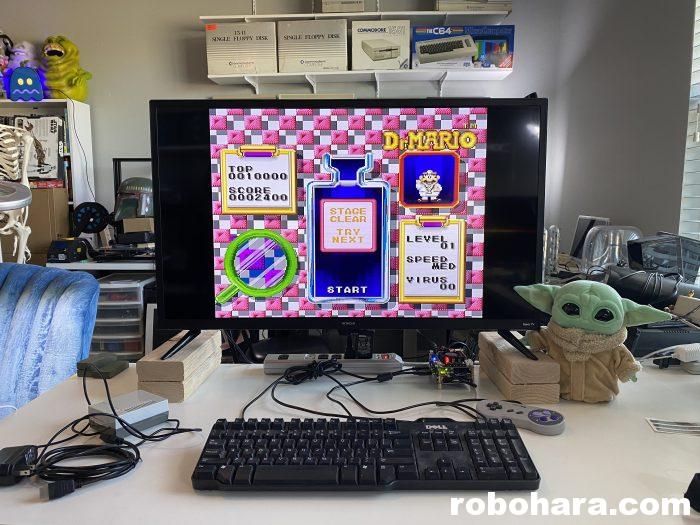
After waiting almost a year, I finally decided to buy a MiSTer FPGA computer. If talk of cutting edge FPGA computers doesn’t interest you, I’ll spare you — it’s okay to skip this entry.
FPGA (Field Programmable Gate Array) computers are fascinating little devices. Most computers contain CPUs with their code permanently etched into them. An FPGA has no code of its own; instead, “cores” are flashed into the chip. Imagine a magical car that could instantly change from a van to an SUV to a sports car with the press of a button — and that every day, people out there were creating new car models that could be downloaded and used for free. That’s kind of what FPGA computers are like.
You may be familiar with emulators — software that allow computers to run programs or play games written for other computers or game consoles. FPGA computers are similar, but under the hood there’s a big difference. Technically, emulators translate software to run on different platforms, while FPGA computers simulate the original hardware. While a layperson might look at both systems and say, “huh, they both play Super Mario Bros.,” the difference between the two has led to aggressive shouting matches between nerds.
I bought my MiST, the predecessor to the MiSTer, back in 2013. Originally the MiST was designed to run Amiga and Atari ST cores, which is where the name came from (A”mi”ga, Atari “ST”). By the time I bought mine, developers were alread writing and porting cores from other systems to the MiST as well. The cut off of what the MiST can simulate falls somewhere between 16-Bit and 32-Bit systems. It has no problem with 8-Bit computers or consoles, but consoles such as the original PlayStation and Nintendo 64 are beyond its capabilities. The original MiST’s design is also on par with other small systems of the early 2010s — it has VGA output, a limited amount of RAM, and no (out of the box) network capabilities.
One look at the MiSTer and a person can see how far the technology has advanced in almost a decade. Right off the bat, the MiSTer has been built using off-the-shelf hardware. Not only is the MiSTer more powerful than the original, but the motherboard itself is about 1/3 the price of the original. Don’t worry, though — with the addition of a USB hub, 128MB of RAM, and a third digital I/O board, I managed to drive the price up to almost what I paid for the original MiSTer. (The addition of a case would have pushed it past the $400 mark. I’ll be 3D printing one of my own, instead.) The MiSTer also has a built in ethernet port, and supports WiFi and Bluetooth dongles.
A larger FPGA combined with the addition of more RAM allows the MiSTer to play a few more cores that the original MiSTer could not (see: Neo Geo), although that’s not the biggest difference between the two. The biggest difference is that most of the people developing, maintaining, and improving the cores have moved to the MiSTer. If you’re content with what the MiST currently runs, it’s still not a bad deal (and I’ll be selling mine soon!). But if you want to play newer systems or want to be on the cutting edge, the MiSTer is the way to go.
Happy New Year Rob! I just got one of these myself. I’m waiting on the other parts (RAM, I/O board, and USB Hub) to come in but from what I’ve been messing with, I like it so far! I just need to get a case as well. Where did you find a 3D printed case? I’ve currently got my eye on the black aluminum case on misteraddons.com but they’re currently sold out.